The quadRANT


The quadRANT: Expounding on the number 4, a.k.a the magic behind QUAD Model.
Four is all around us. As it happens, four is us, but I’ll get to that further along in this quadRANT. Four sets the stage for the wonders and workings of the universe. It also happens to be the magic behind QUAD Model, our forward-focused strategic planning tool that’s designed to cultivate progress by reducing complexity.
Four sets the boundaries for the existence and survival of many things in the natural world; groups of four are the stuff of chemistry and biology. In mathematics, four is the smallest composite integer and the smallest squarable prime. In the tech world, those of us spinning the webs of the Web take it as gospel that HTML elements are bound within a four-sided shape.
The number four sets guidelines for how we think and it acts as a frame of reference for learning. The significance of four (the number, numeral, and associated geometric shapes) has held across a multitude of subjects and societies for millennia. Four dictates the methodologies for addressing philosophical problems. It even gives shape to the universe.
Let me break it down for you:
The Body
The composition of our brains is four: the stem, cerebellum, and left and right cerebral hemispheres. Each hemisphere is divided into four lobes: frontal, parietal, temporal, and occipital. We have four body tissues: epithelial, connective, nervous, and muscle; the latter shapes the four chambers of our hearts. We have four limbs, four incisors, four wisdom teeth, and four blood types: A, B, AB, and O, in which four polypeptide subunits, two each of alpha and beta chains, form our hemoglobin.
There are four nitrogenous nucleotide bases in our DNA: adenine, thymine, cytosine, and guanine (in RNA, urasil replaces thymine). And four, according to ancient Hippocratic physicians, are our bodily Humours, or fluids: melaina chole (black bile), kitrini chole (yellow bile), phlegma (phlegm), and haima (blood). It used to be that good physical health meant that these Humours were in order. To keep them in order, one needed to maintain a healthy temperament.
The Mind
The Classical world held that there were four personality temperaments: sanguine, phlegmatic, choleric, and melancholic. They were believed to directly affect the Humours. Beyond bodies and personalities, Plato ascribed four cardinal virtues to the population classes of his Republic’s fictional “good” city. Temperance, fortitude, prudence, and justice. Justice, he said, would dictate all of the relationships between the temperate workers, fortitudinous warriors, and prudent rulers.
Aristotle established Classic Logic’s square of opposition, in which four paths (contrary, subcontrary, contradictory, and subaltern) reduce four possible forms of categorical propositions. First, the universal affirmative ‘every S is P’. Next, the universal negative ‘no S is P’. Third, the particular affirmative ‘some S are P’ and, finally, the particular negative ‘some S are not P’. Plato outlined his other four, The Quadrivium, also in The Republic: arithmetic, astronomy, geometry, and music formed the curriculum. Like Plato, Aristotle also found another four, but in the nature of being: the material, formal, efficient, and final forms.
More modernly, military strategist John Boyd’s ‘OODA loop’ is a four-part cycle of observing, orienting, deciding, and acting. Even President Roosevelt declared a set of four. He held that the following four freedoms were a fundamental right deserved by everyone: freedom from want, freedom of expression, freedom from fear, and freedom of worship.
The Spirit
There are four Gospels in the Christian bible: Mark, Luke, John, and Matthew. The apocalypse, in the book of Revelations, is wrought by four Horsemen: Conquest (Pestilence), War, Famine, and Death. In Judaism, there are four matriarchs: Sarah, Leah, Rebekah, and Rachel; four letters (YHWH, the Tetragrammaton) in the name of God; and, during Passover, the seder involves many fours, including four cups of wine and a child reciting four questions. The Muslim holiday Eid-al-Adha lasts four days, and among the many fours of Islam are its sacred texts (the Torah, Zaboor, Injeel, and Quran) and the archangels (Mikaeel, Jibraeel, Izraeel, and Israfil).
The basis of Buddhism is four Noble Truths: dukkha (suffering), samudaya (dependant arising: the cause of suffering), nirodha (cessation: the end of suffering), and magga (the Eightfold Path; mindfulness: the way to the end of suffering). Rigveda, Samaveda, Yajurveda, and Atharvaveda are the four sacred texts, or Vedas, of Hinduism. Described therein are the four values of every human life: dharma (the moral), artha (the economic), kama (the psychological), and moksha (the spiritual).
Four sets the foundations for religious practices and gnostic and native symbolism. The square still represents Earth in some indigenous cultures. Others still orient the Earth into four corners. At practically any point in human history that you can shake a stick at, someone asked a question of such great magnitude that the answer existed outside of the realm of human understanding. So far outside, in fact, that it felt completely outside of this world. So it makes perfect sense, given this rooting of four into the very bedrock of human traditions, why people who ask big questions and seek out big answers tend to gaze up and outward.
The Universe
Most of us know there are four seasons: winter, spring, summer, fall. And most of us know the four cardinal directions: Never Eat Soggy Waffles, remember? But not everyone remembers that there are four fundamental states of matter: solid, liquid, gas, and plasma. Not everyone can recall the four phases of the the moon: waxing, waning, full, and new.
The valency of carbon atoms is four; four is also the crystal structure of the diamond, a carbon allotrope. Speaking of elements, Empedocles proposed that four existed: earth, air, water, and fire. At that time, people believed that the divine forces of Love and Strife affected these elements. Now, we call these forces attraction and repulsion. On that note, the fundamental forces of physics, reduced to their simplest interactions, are weak, strong, electromagnetic, or gravitational. We can measure the motion of an object upon which force is exerted: to determine what is unknown, we can plot what is known into one of four kinematic equations. That’s how we find our answer.
Finally, we arrive at Minkowski spacetime. The framework of spacetime is formed by the confluence of 3-D Euclidean space and the singular dimension of time into a four-dimensional, differentiable manifold, i.e. a real or real number vector space wherein the interval (a measurement agreed upon by observers, in relative motion, regarding a combination of time and distance) between two instantaneous events is independent of the frame of reference–bodily motion being referenced in relation to something else, like another body–in which the events are recorded. To put it simply: the space where and time when everything written in this article happened—and everything else that’s happened, anywhere, ever—is four.
…
So four links the body to the mind to the spirit to the universe. Four is a metaphorical and figurative yardstick; a tool that’s simultaneously symbolic and literal. Four can’t help but be the magic behind QUAD Model. Also, Beyoncé’s fourth album is titled 4 and if that’s not the icing on this quadrant cake, I don’t know what is.
… Plus the basic components of a cake are flour, eggs, sugar, and shortening.
0x04 EOT.
Fully transparent. Rapid testing. Growth minded.
Fully transparent. Rapid testing. Growth minded.
Schedule your 15-minute free consultation
WE•DO is ready to put our minds to work to drive your growth.


